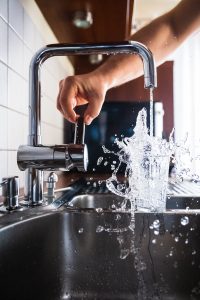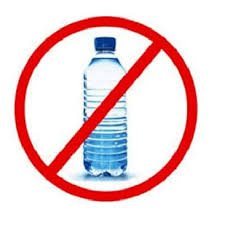Water and cancer are linked. Clean water is essential for good health.
There is evidence that contaminated water and cancer are linked. For example arsenic contamination in WA water. Like clean air, drinking water quality is something most of us take for granted. Until something like a bushfire or health scare such as cancer make us think again!
Water and Cancer – There are Toxic Chemicals in our Water

‘The Essence of Life’
You know that water is a life-sustaining fluid that’s essential to our health. BUT if you’re drinking straight out of the tap, it may undermine your health.
The human body is made up of about 70% water, in fact your brain is 90% water, and most of your blood and every cell in your body is composed of water. Therefore, water is vitally important if we expect our body to function properly.
There is a growing concern amongst health practitioners worldwide, that the majority of people don’t drink enough water; in fact, we are dehydrated, most of the time. Instead of drinking water, people drink sugary drinks, alcohol, coffee and tea, which are not hydrating us.
How to get hydrated?
- The standard rule of thumb for the average person is to drink 8 glasses of water per day. Men’s bodies however have a greater % of water than women, it’s generally accepted, that this should be upped to 2.5 – 3.0 L per day. It sounds like a lot, but if you sip that amount throughout the course of each day; you’ll hardly notice it.
- The trick is to have a refillable bottle of water with you at all times; I drink out of glass or stainless-steel bottles, rather than toxic plastic.
- If you try and cheat and drink 1L of water, 3 times during the day; Be Warned – your body won’t be able to process most of that water and it will simply be expelled.
When you drink tap water, you’ll likely be getting more than you bargained for — chlorine, fluorine compounds, Trihalomethanes (THMs), assorted hormones, pesticides and even trace amounts of prescription drugs! How can this be so?

How can this be so?
The problem lies in where the water has come from to get to your tap!
Water, Water Everywhere – But What is in the Water We Drink?
‘Clean’ drinking water, straight from the tap, probably isn’t what most of us would call clean.
- Often the water has travelled through kilometres of pipeline, picking up contaminants, pesticides, fertilisers and industrial run-off along the way. Many insecticides and pesticides are linked to cancer. Fertilisers are heavy with nitrates/nitrites and animal waste poses serious health issues.
- Disinfected with potential carcinogens like chlorine, ammonia and or chloramines, then ‘fortified’ with fluoride. Now don’t get me wrong; disinfection is a necessary evil — without it, water-borne illnesses would be a constant problem, but to drink, shower in and cook with these chemicals, is not in our best interests, if we are serious about our health.
- Water is also considered the universal solvent due to its ability to dissolve most compounds. If the home you live in has lead or copper pipes, then there is a possibility that these metals are leaching into your drinking water. Particularly if the pH of your water is acidic, as this aids the leaching process. If this is a concern for you, then I suggest you speak to a qualified plumber about your situation.
- Copper is known to cause digestive problems, liver and kidney damage,
- Lead is known to cause nerve and kidney damage, and behavioural problems in children, and
- Iron; rusting will turn the water brown and possibly cause digestive issues.
Rural People
- If you draw your water from other sources, you could be faced with additional risks –
- Tank water can be further contaminated with bugs (micro-organisms) from the droppings of birds and animals, air-borne fallout from pollution and bush fires, or toxic roof/gutter runoff.
- Well water users may have to contend with all sorts of contaminants based on where the well is located such as heavy metals and toxic petrochemicals from nearby industry and bugs from leaching septic tanks.
Bottled Water is NOT the Answer!
Believe it or not; chances are, that expensive bottle of water you have been buying, wasn’t sourced from an alpine stream in the Swiss Alps.
No; chances are that it came from a town water supply somewhere. That’s right, you guessed it: straight out of a tap somewhere! Most bottled water is just glorified tap water at 5,000 times the cost!
Admittedly, it will have been filtered and possibly treated in some way.
You might be shocked to know that Pepsi’s Aquafina brand,
which is nothing more than tap water further purified, made about $2.8 billion in sales in 2011 (13% of the market), followed by Coca-Cola’s Dasani bottled tap water with about $2.3 billion (11% of the market).
Some of the issues with plastic bottled water
It is ridiculously expensive: A litre of tap water in Australia costs a fraction of a cent; yet a bottle of ‘so-called’ Spring water can be upwards of $3.50/L. This is more than fuel for your car. If you hydrate yourself with 2L/day straight from the tap, it will cost you about $1.50/year. At $3.50/L, that’s over $5,000 a year!! I know Australian water is cleaner than other places but seriously, the bottled water is no better than tap most of the time.
- Phthalate, a chemical group used to make the plastic bottles for bottled water, can leach into the water and is a potential cancer-causing agent.
- Bottled water is not tested for E.coli a bug from faeces, and bottled water companies don’t have to tell you where the water came from or produce quality reports.
- Ozone disinfection is increasingly being used to disinfect bottled water. However, when ozone and bromide (naturally occurring) interact they form bromate, a possible human carcinogen. There have been a number of well know recalls in the US, where several brands of bottled water contained elevated levels of bromate.
- Many bottled waters contain toxins. The plastic used in single-use bottles can pose more of a contamination threat than the water. A plastic if used only once, #1 polyethylene terephthalate (PET or PETE) is the most common resin used in disposable bottles. However, as #1 bottles are reused, as they commonly are, they can leach chemicals such as DEHA, a possible human carcinogen, and benzyl butyl phthalate (BBP), a potential hormone disruptor.
- Because the plastic is porous, you’ll likely get a swill of harmful bacteria, such was E. coli with each gulp if you reuse the bottles.
Plastic bottles are not environmentally sustainable as well.
Plastic Water Bottle – the verdict
Of course there are many parts of the world where the local water is so contaminated that bottled water IS the only option; but where we do in fact, have a choice I suggest that you: Say NO to Bottled Water! Drink filtered water in glass or stainless steel.
Water Filtration Systems Can Offer a Reliable Solution
This all leads us back to drinking tap water. Taking responsibility for filtering our water ensures that it is better for our health. There are many ways to filter water, with ‘Reverse Osmosis’ being the gold standard among health advocates for removing the maximum amount of water pollutants.
- To begin with, I recommend you make sure that any water filtration system you consider, is certified by the NSF, an independent, non-profit group that tests and verifies the contaminant reducing abilities of water filters, or a similar testing facility in your own area.
- Next, you’ll need to determine how far you’re willing to go, based on your needs and budget. Whole-house filtration systems are an excellent option, but they’re not always feasible, nor cost-effective.
- If whole-house filtration isn’t appropriate for your needs, then I suggest that you look into investing in individual drinking water and shower filter units. You can get counter-top units, under bench units, as well as portable “water filtration jugs”, which you can put in the fridge. They all have their pro’s and con’s!
Water filtration doesn’t need to be complicated. If you can afford it go for a reverse osmosis (RO) system in the kitchen, and an activated carbon filter on your shower head. The next best option is a twin or triple stage portable or under sink system featuring a 1.0-micron sediment filter and one or two 0.5-micron activated carbon block filters. If your budget is really tight, go for a single stage system incorporating a dual function cartridge (combined sediment filter and 1.0-micron carbon block filter).
REMEMBER: anything you do will have some benefit, over doing nothing!
If you’d like more detailed information on water filtration technologies and find out what’s best for you and your home, have a personalised assessment click here Water Filtration
Shower Filtration – Why Bother?
Did you know that your body absorbs more chlorine through the skin and lungs while showering than while drinking tap water?
This can irritate your lungs and have seriously harmful side effects over time. Chlorine also strips protein from your skin and hair, leaving it dry and itchy. This can make things worse if you are going through treatment for cancer when your skin is sensitive and hair and nails drier.
Myself, I have been using a carbon-block on my shower head for more than 10 years. It’s amazing the difference it makes compared to when I shower at the gym or elsewhere. My hair and skin feel so soft in comparison and no noxious chlorine odour. I am happy to discuss options if this is something you are interested to find out more.
Yours in good health,


